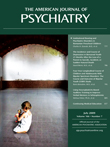Four-Year Longitudinal Course of Children and Adolescents With Bipolar Spectrum Disorders: The Course and Outcome of Bipolar Youth (COBY) Study
Abstract
Objective: The authors sought to assess the longitudinal course of youths with bipolar spectrum disorders over a 4-year period. Method: At total of 413 youths (ages 7–17 years) with bipolar I disorder (N=244), bipolar II disorder (N=28), and bipolar disorder not otherwise specified (N=141) were enrolled in the study. Symptoms were ascertained retrospectively on average every 9.4 months for 4 years using the Longitudinal Interval Follow-Up Evaluation. Rates and time to recovery and recurrence and week-by-week symptomatic status were analyzed. Results: Approximately 2.5 years after onset of their index episode, 81.5% of the participants had fully recovered, but 1.5 years later 62.5% had a syndromal recurrence, particularly depression. One-third of the participants had one syndromal recurrence, and 30% had two or more. The polarity of the index episode predicted that of subsequent episodes. Participants were symptomatic during 60% of the follow-up period, particularly with subsyndromal symptoms of depression and mixed polarity, with numerous changes in mood polarity. Manic symptomatology, especially syndromal, was less frequent, and bipolar II was mainly manifested by depressive symptoms. Overall, 40% of the participants had syndromal or subsyndromal symptoms during 75% of the follow-up period, and 16% of the participants experienced psychotic symptoms during 17% the follow-up period. Twenty-five percent of youths with bipolar II converted to bipolar I, and 38% of those with bipolar disorder not otherwise specified converted to bipolar I or II. Early onset, diagnosis of bipolar disorder not otherwise specified, long illness duration, low socioeconomic status, and family history of mood disorders were associated with poorer outcomes. Conclusions: Bipolar spectrum disorders in youths are characterized by episodic illness with subsyndromal and, less frequently, syndromal episodes with mainly depressive and mixed symptoms and rapid mood changes.



